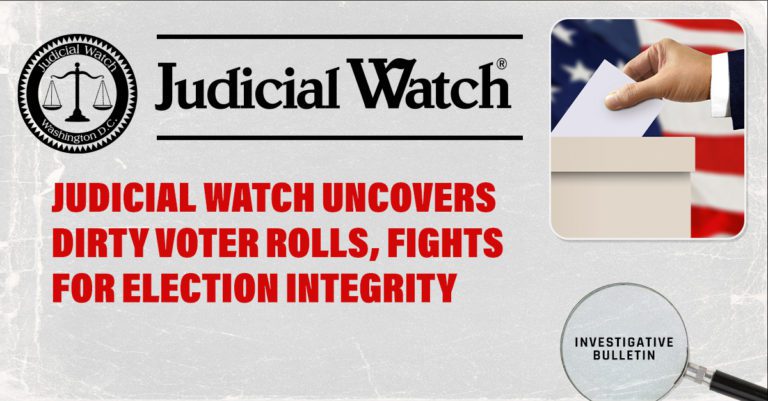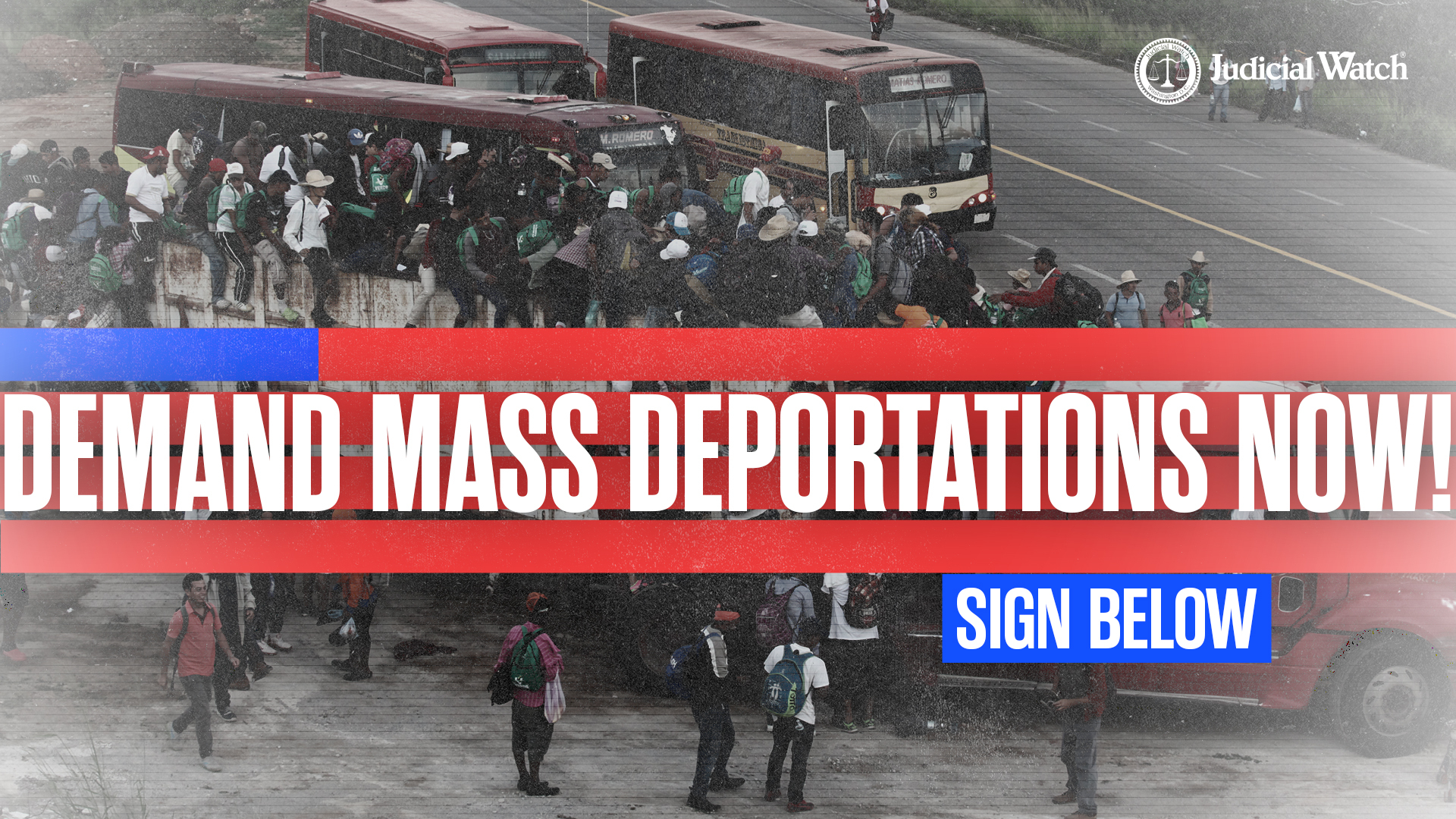
Exclusive: Judicial Watch Uncovers Dirty Voter Rolls, Fights for Election Integrity

In a high-impact case of potential voter fraud you’ll learn about only from Judicial Watch, a new investigation reveals likely ineligible voter registrations around the country.
In November, Judicial Watch’s election integrity team sent letters to officials in five states warning of apparent serious violations of the National Voter Registration Act. The NVRA is a critical election integrity measure that directs the states to make “a reasonable effort” to remove from voting rolls “the names of ineligible voters” who have been disqualified from voting due to death or failure to provide notification of change of residence.
Dirty voter rolls matter. Leaving the names of inactive voters on registration rolls creates opportunities for fraud, such as dead people voting or double voting. Sometimes it takes only a few votes to swing an election.
The numbers of potentially ineligible voters identified in the new Judicial Watch probe are staggering. The NVRA requires states to remove registrations of voters who fail to respond to an address confirmation request and then fail to vote in two consecutive elections. States are required by federal law to report to Congress how many ineligible voters are removed from their rolls for this reason. Judicial Watch mined the statutory reporting data for some astonishing revelations: over the most recent four-year reporting period, large counties in powerful states such as New York and California reported few or no removals of ineligible voters from voting roles.
For example, in the heart of New York City, Manhattan, with 1.2 million registered voters, state authorities removed a grand total of two ineligible voters from voting rolls for failing to respond to a notice and vote, according to data New York itself provided to Congress.
In Brooklyn, with 1.7 million registered voters, the number removed for this reason: zero. In Queens, with 1.3 million registered voters, the number removed as ineligible: zero. In the Bronx, with 867,000 voters: one ineligible voter removed. In Staten Island, with 344,000 voters: zero.
The story is the same in California. Large counties show impossibly small number of ineligible voters removed from voting rolls for failing to respond to a notice and vote. In San Bernardino County in Greater Los Angeles, with a county population of 1.2 million registered voters, a total of fourteen ineligible voters were removed from the voting rolls for the entire four-year reporting period, according to data the state provided to federal officials. For Sacramento County, with over one million registered voters: zero removed. In Fresno County, with more than 500,000 registered voters: two ineligible voters removed.
“About 10% of Americans move every year,” notes Robert Popper, Judicial Watch’s director of voting integrity efforts. “Those counties should generate hundreds of thousands of cancelled registrations. There is simply no way to comply with federal law while removing so few outdated registrations under its key provision.”
Judicial Watch sent warning letters to state election officials in five states—New York, California, Oregon, Arkansas, and Illinois—noting the impossibly low numbers of statutory removals. The warning letters give the state 90 days to correct the record. “If the data are incorrect,” the Judicial Watch letters note, “please provide what you believe to be the correct numbers.” If the numbers are not corrected or otherwise resolved within 90 days, “we will commence a federal lawsuit.” Read the letters here.
Judicial Watch supporters know that this is not our first rodeo.
In California, we uncovered 1.6 million inactive voters on electoral rolls in Los Angeles County and sued, forcing LA to clean up its act.
We sued Pennsylvania for failing to make reasonable efforts to remove ineligible voters from their rolls. Pennsylvania revised its numbers, admitting it had reported incorrect information to a federal agency on the removal of ineligible voters. But even the new figures are too low. Pennsylvania now admits that in eighteen other counties—which together contain twenty-five percent of the entire state’s registered voters—it removed a grand total of fifteen inactive, ineligible voters in a two-year period.
We went to court in Colorado, where studies have shown that a majority of the state’s counties have registration rates that exceed 100% of the voting-age population. Our lawsuit charges “an ongoing, systemic problem with Colorado’s voter list maintenance obligations.”
We filed a lawsuit in North Carolina for the same reason—large numbers of ineligible voters on the state voter rolls.
We’ve successfully taken on Ohio, Kentucky, and Indiana as well. In Ohio, a Supreme Court decision upheld a voter-roll cleanup stemming from a Judicial Watch lawsuit. In Kentucky, we sued for a voter-roll cleanup and won. Indiana agreed to clean up its rolls after Judicial Watch launched an investigation.
The new warning letters put California on notice (again) and expand Judicial Watch’s electoral integrity work into New York, Oregon, Arkansas, and Illinois. “Once again, Judicial Watch is leading the charge for clean voter rolls and election integrity,” says Judicial Watch President Tom Fitton. “These letters are just the beginning of another sweep, in federal court if necessary, to clean voter rolls throughout the country.”
***
Micah Morrison is chief investigative reporter for Judicial Watch. Follow him on Twitter @micah_morrison. Tips: mmorrison@judicialwatch.org
Investigative Bulletin is published by Judicial Watch. Reprints and media inquiries: jfarrell@judicialwatch.org
















